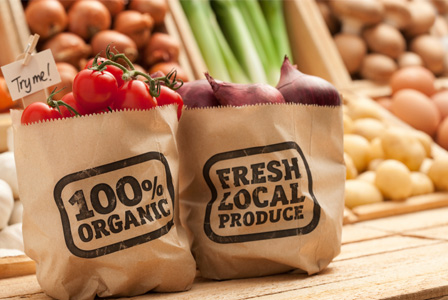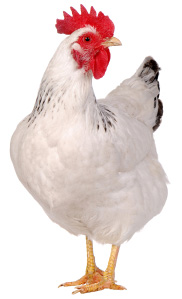
Going green for Earth Day can be intimidating with labels like sustainability, organic, biodynamic, local and cage-free being thrown around. Find out what they mean and what you should look out for.
Eat Green for Earth DayThere are now hundreds of different labels and terms for our food products, which can be confusing and at times even misleading. When looking to go green, the best place to shop for food is typically at the farm itself, if possible. For city dwellers, farmers markets, CSAs (community-supported agriculture programs), co-ops and health food stores are wonderful alternatives. Even major supermarket chains are increasingly keeping the environment in mind when stocking their shelves. Here are some terms to look out for and what they mean.
Check out these 5 misleading claims on food labels >>BiodynamicDeveloped in the 1920s, biodynamic farming and winemaking are similar to organic in that they focus on the use of natural methods and pesticides. The biggest difference is its emphasis on celestial patterns (biodynamic farmers believe that the moon’s position and phase, for example, affects the cultivation of crops). They also consider the farm as a single holistic system that includes all the plants and animals working in harmony with one another. In order to be labeled as biodynamic, products must meet the standards set by independent certification agencies.
 Cage-free
Cage-freeThis is a term applied to chicken and eggs. As opposed to normal poultry, which is raised in the tight confines of boxes, cage-free means that the chickens are kept in some sort of open space, although what kind and how much room they have is not regulated. Cage-free is often used interchangeably with free-range, which is incorrect (free-range indicates that the chickens have some access to outdoor space, although this too is poorly regulated).
LocalA broad term, "local" most often refers to the distance your food traveled from producer to consumer. While Congress considers 400 miles to be local, most locavores argue that local should indicate a 100-mile radius. The benefit of eating local is that the less food has to travel, the smaller its carbon footprint (meaning that less gas and fewer emissions were used for transportation). In addition, the idea is also to support the local economy. Of course, the term is not regulated at all and does not tell you anything about the food itself.
Find out the ins and outs of local food >> OrganicOne of the most heavily regulated eco-friendly terms, an organic label indicates that, to some extent, the food is pesticide and hormone-free and animals must have a certain amount of access to a legit pasture for grazing. There are different tiers of organic, which consumers should be aware of. A product that boasts the USDA Organic seal and is labeled as 100 percent organic means that every aspect of both the methods and ingredients are organic. Products can still be labeled as simply "organic" when up to 95 percent of the ingredients are up to standards. Anything below 70 percent can still say "made with organic" ingredients, so keep an eye out for that.
Read more about sustainable fish >>SustainableSustainable is another broad, unregulated term that can be applied to a number of things, including agriculture and seafood. The USDA has defined sustainable agriculture as "an integrated system of plant and animal production practices" that satisfies human food needs while being gentle on the environment. According to the Monterey Bay Aquarium’s Seafood Watch, "sustainable seafood is from sources, either fished or farmed, that can maintain or increase production into the long-term without jeopardizing the affected ecosystems."
More tips for eating green10 Ways to go green at the grocery store
Health benefits of going green
How to save money buying sustainable foods
没有评论:
发表评论